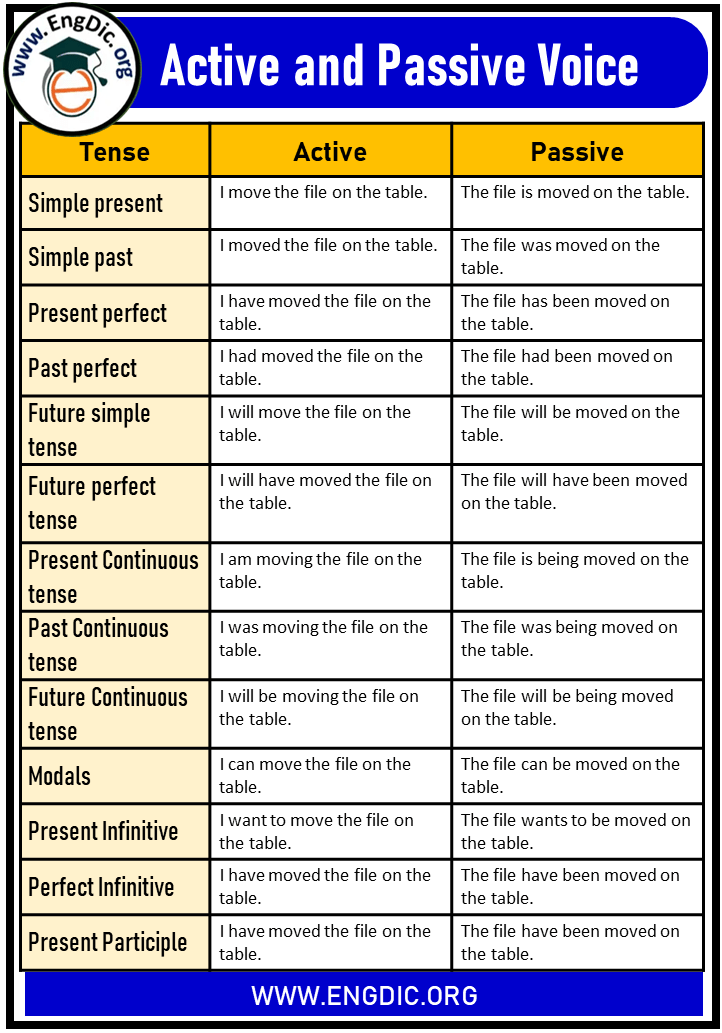In English grammar, sentences can be written in either active or passive voice. In active voice, the subject of the sentence performs the action, while in passive voice, the subject receives the action. It’s important to understand the difference between the two and know when to use each one.
Active voice is typically used when the focus is on the subject performing the action. It is more direct and engaging for the reader. Passive voice, on the other hand, is often used when the focus is on the action or when the doer of the action is unknown or less important.
Active Passive Voice Chart
Here is a chart to help you understand the differences between active and passive voice:
| Active Voice | Passive Voice |
|---|---|
| I write a letter. | A letter is written by me. |
| She sings a song. | A song is sung by her. |
| They build a house. | A house is built by them. |
As you can see from the chart, in active voice, the subject comes before the verb, while in passive voice, the object comes before the verb. The verb in passive voice is also preceded by a form of “to be” (is, are, was, were, etc.) and followed by the past participle of the main verb.
It’s important to choose the appropriate voice based on the context of the sentence and the emphasis you want to place. Active voice is often preferred for clear and concise writing, while passive voice can be used to emphasize the action or when the doer of the action is unknown or less important.
By understanding the differences between active and passive voice and when to use each, you can improve the clarity and effectiveness of your writing. Practice using both voices in your sentences to become more comfortable with their usage and to convey your message more effectively.
In conclusion, the active passive voice chart can serve as a helpful tool in understanding the differences between the two voices and when to use each. By mastering the use of both active and passive voice, you can become a more confident and skilled writer.
